My fab nephew, a budding 10 year old artist (at the time), messaged me all the way from the uk asking me “How do you make a comic?” I thought wow what a question.
A quick search later, I struggled to find a preexisting guide good for kids. The few I found they were too basic. Knowing that my nephew is smart and would want more than “draw a box and draw pictures inside” guide, I set about drawing tips as if I was talking to him about it in person. I had only intended the tutorial for him as they are all very rough, but my husband encouraged me to put them online.
![]() This is my process for making comics, it’s prob not how everyone does it, but I hope that this is a good starting point for any budding comic creators. I also made a PDF (7.5MB) of this post for printout for personal use, click the icon left to go to document.
This is my process for making comics, it’s prob not how everyone does it, but I hope that this is a good starting point for any budding comic creators. I also made a PDF (7.5MB) of this post for printout for personal use, click the icon left to go to document.
How do I make a comic?
The job of the comic creator is to simply allow the reader to follow a story in a specific order with images & text!
Every artist has different styles & different preferences to achieving the above. In this post I’ll cover some comic basics that other comic writers and artists have found works well for them. Hopefully it’s a good starting point but remember:
The best way to learn how to make comics is just to get writing and drawing and learn as you go along. AND have fun =)
The Short Answer
The Long Answer
I have broken the comic making process into 10 simple sections:
Book Layout
Writing
Character Design
Script
Panel Layout
Comic Text
Dialogue Tips
Angles & shots
Storyboarding
Artwork
Book Layout
Understanding how to layout a book will help you write & design your story. Even adults struggle to finish long comic stories, so best to start with a short story, no more than 10 pages.
Writing
Drawing a comic can take a long time, which is why many comics are short stories. That means every panel and page counts. The best tip is to decide how many pages first and build your story around it. Consider making the story shorter or split it into 2 stories if it is too long.
Character Design
It can be very helpful to design key characters as it can really help you writing their personality.
Script
When you’re happy with the rough story, start to build a script. Think about dialogue & narration (optional). Split each page roughly into 1-6 panels. There are many ways to format scripts… as long as it is clear it’s ok.
Panel Layout
There are many ways panels can be used to help the reader follow the story. Artists have different ways they like to layout their panels, but here I’ll start with some simple layouts for Western style comics.
Comic Text
Here’s some examples of comic text formats. Note: people use different terminologies, this is my personal preference.
Dialogue Tips
Dialogue and images are always going to be fighting for space so bear this in mind when designing panels.
Like panels, use speech bubbles to help readers read the text in the right order. Think left to right and up to down.
Angles & shots
It’s more interesting for readers to vary the shots or angles. You can borrow some bits from films/tv to make the comics more dynamic.
Storyboarding
Storyboarding is when the writing and images first come together. Many changes happen here so keep drawings rough. Storyboards are the backbone of the comic process!
Artwork
When you’re happy with the storyboards you can finally start drawing the art. Here is a common process of art.
Learn More
If you’ve completely surpassed this tutorioal if you want to learn more there is a very good book called Understanding Comics: The Invisible Art by Scott McCloud


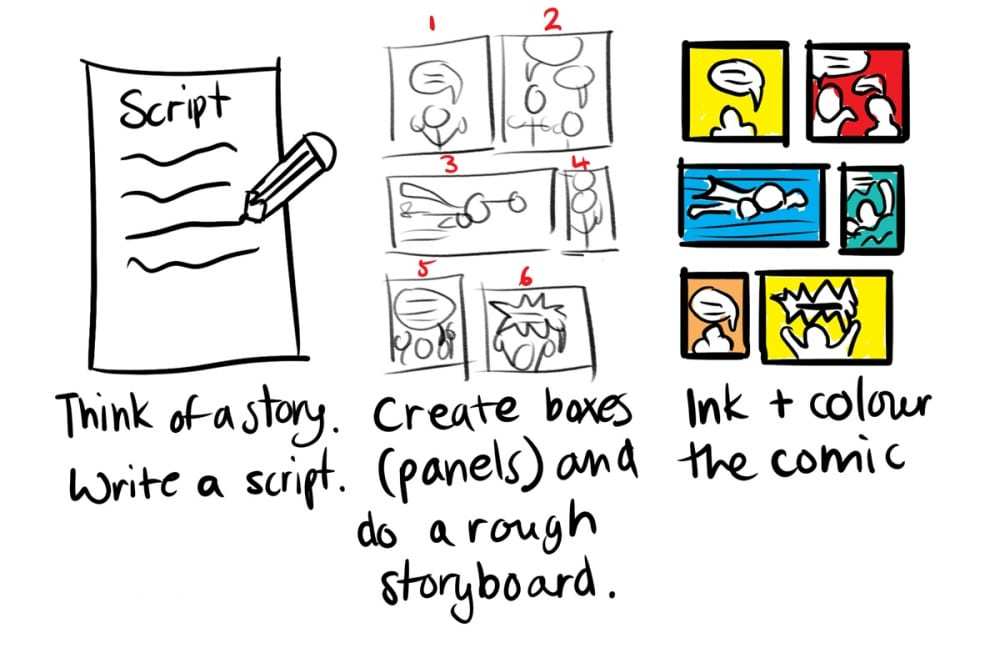
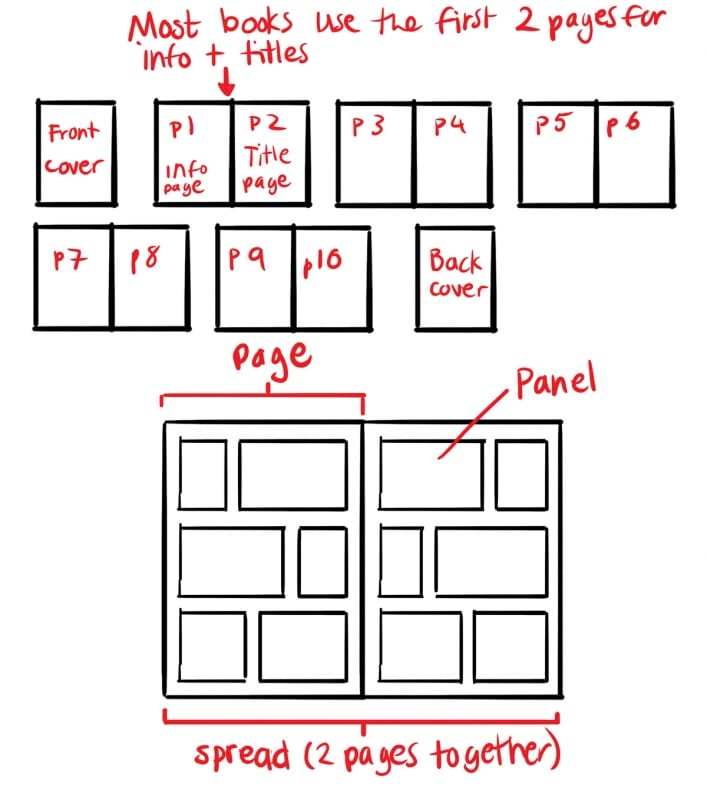
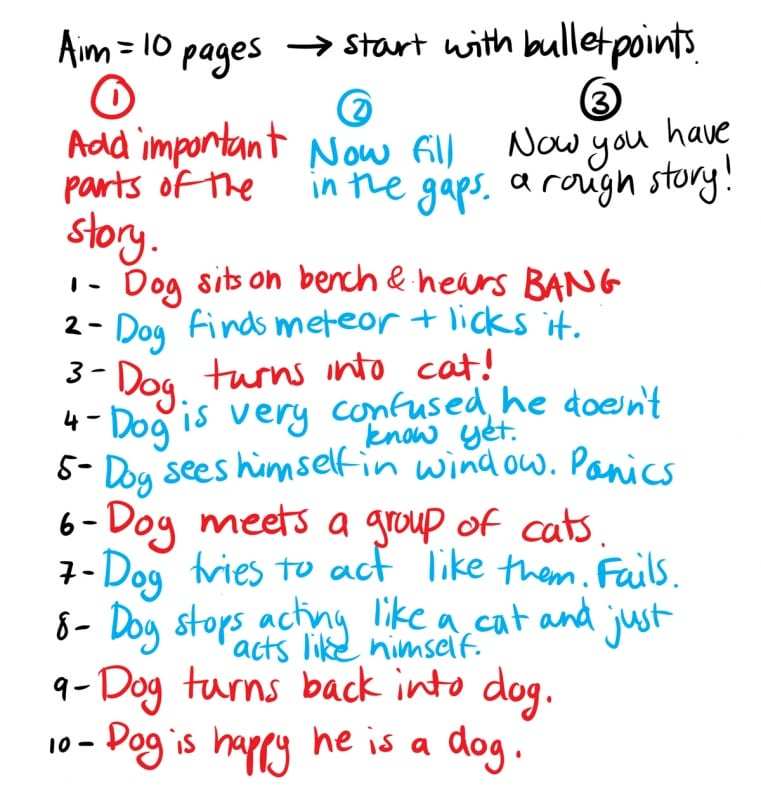
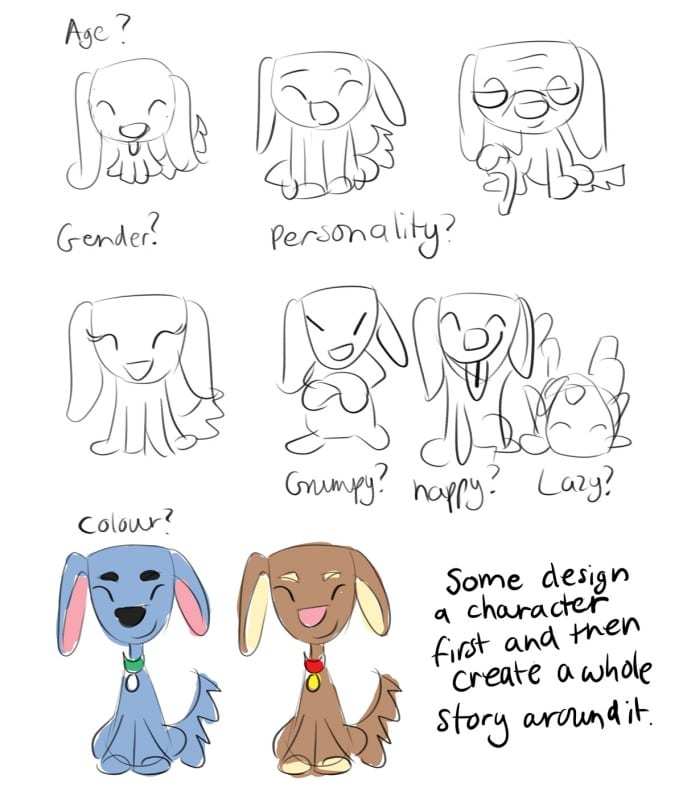
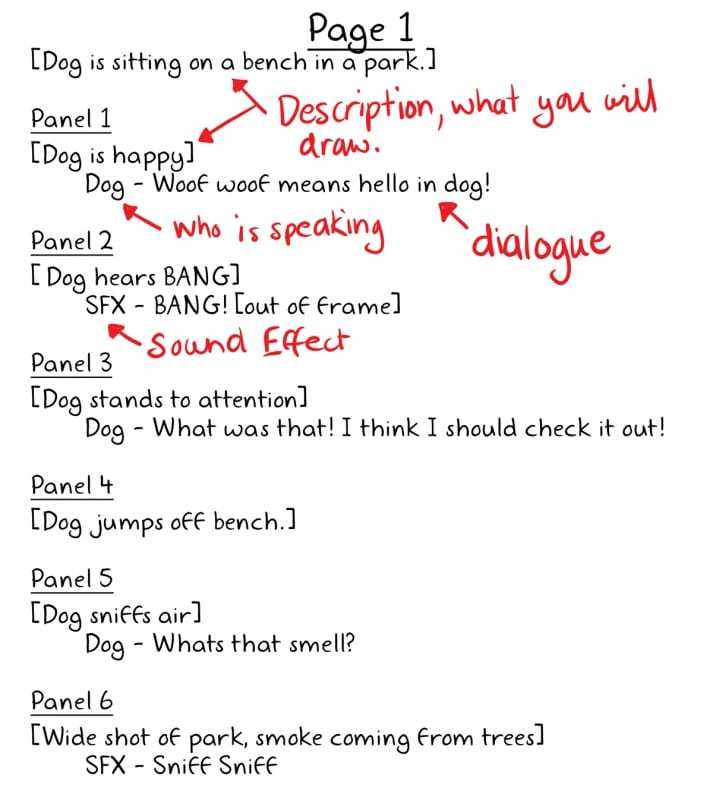
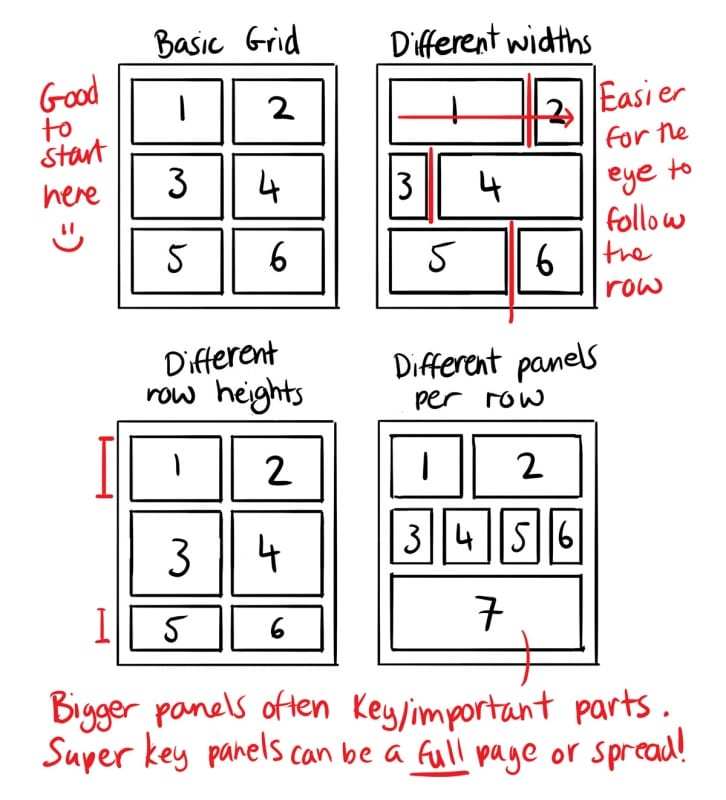
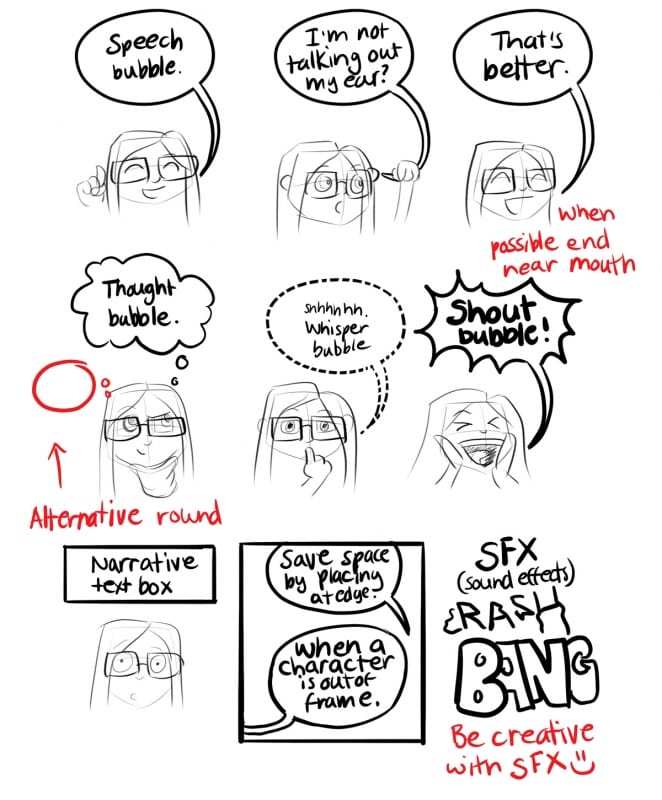
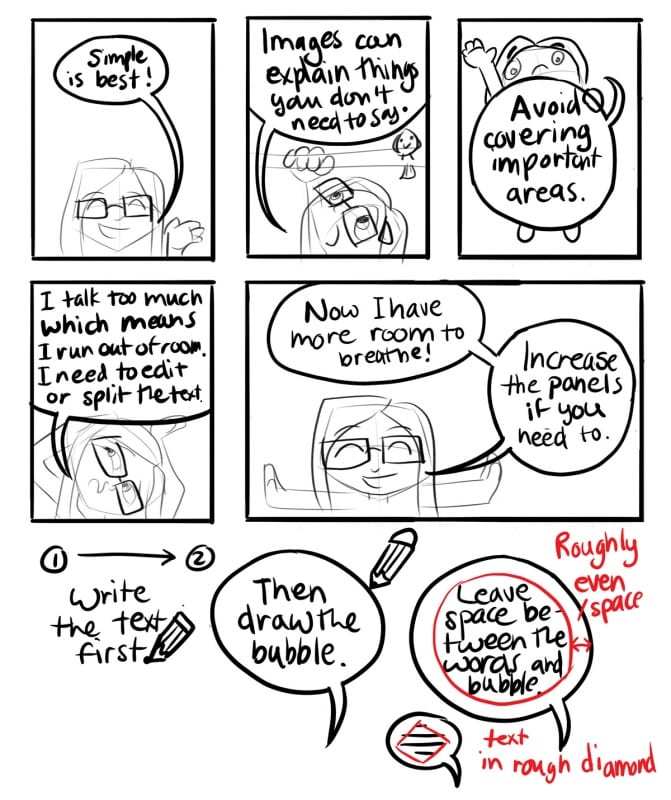
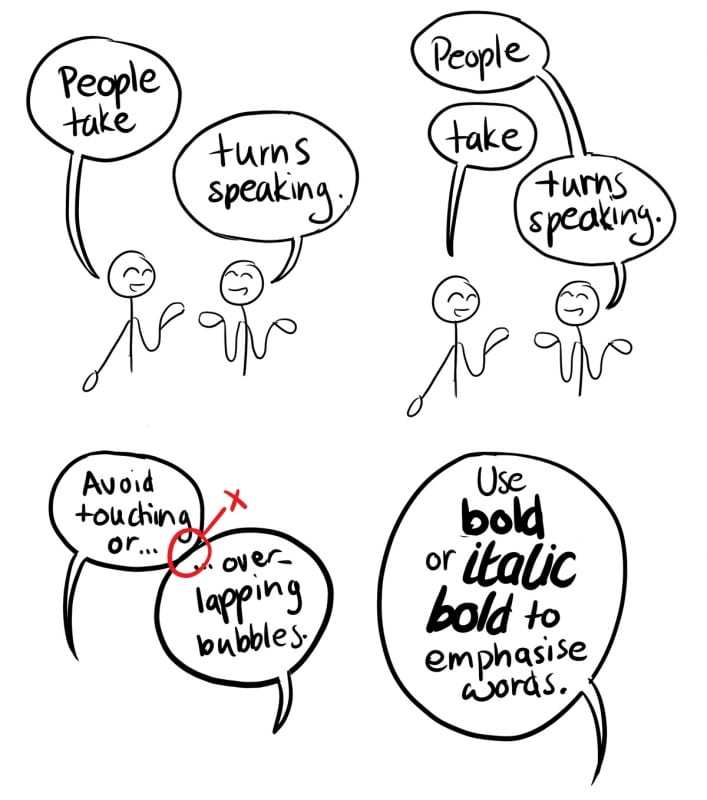
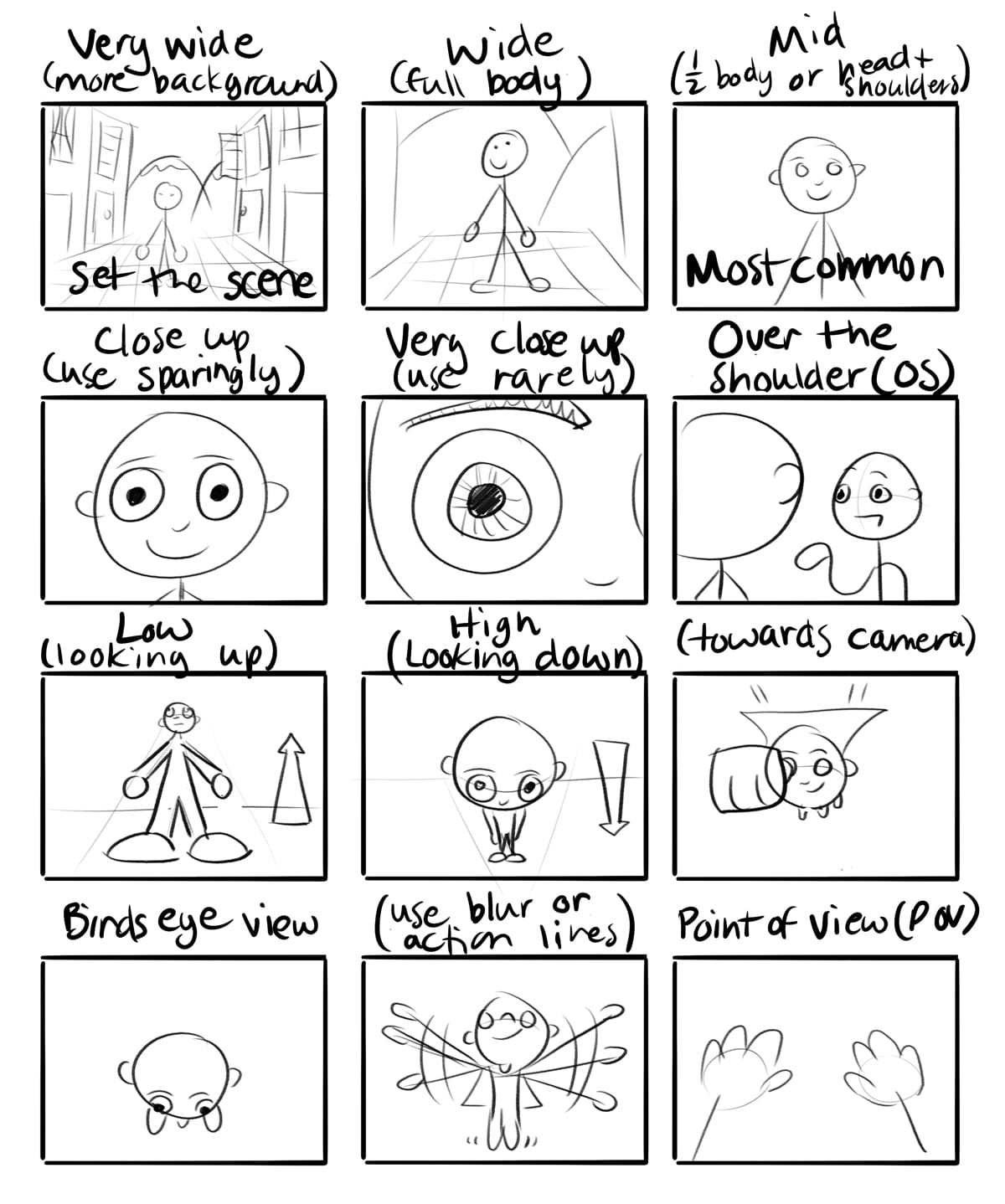
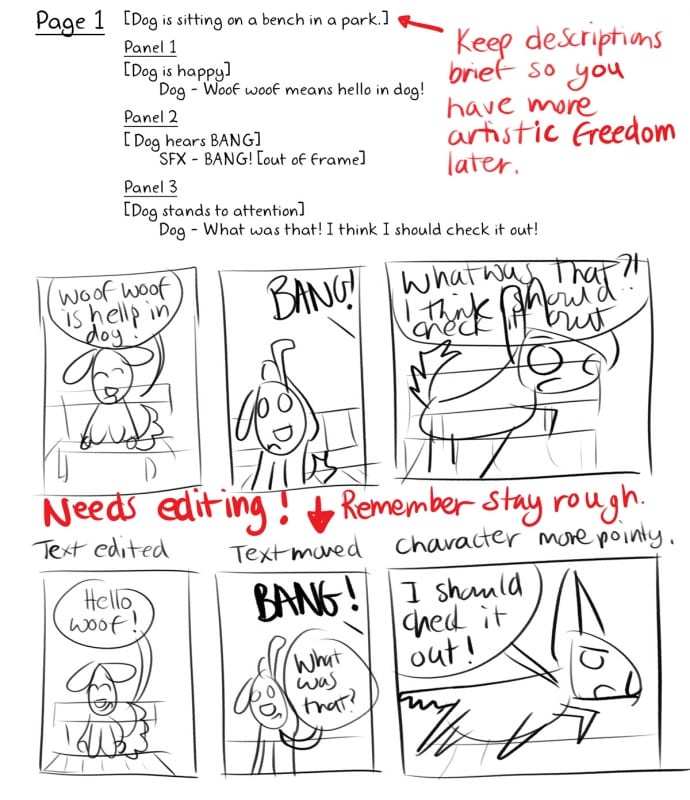
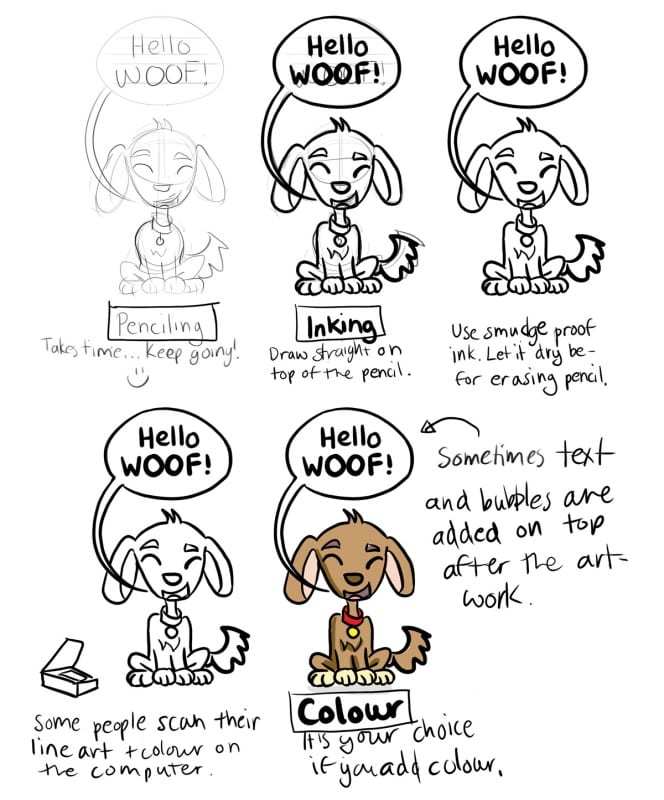


18 Comments